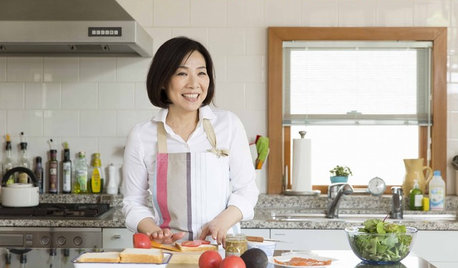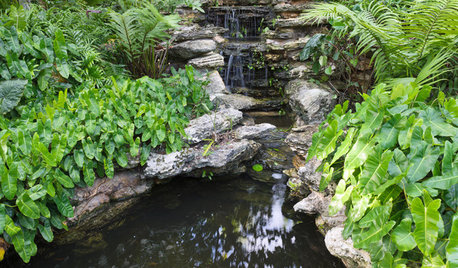how do I safely experiment with recipes?
olbrota
11 years ago
Related Stories

KITCHEN DESIGNWorld of Design: Favorite Recipes From Food Lovers Around the Globe
Travel with your tastebuds and experience for yourself these international foodies' favorite dishes
Full Story
LIFEThe Good House: An Experience to Remember
A home that enriches us is more than something we own. It invites meaningful experiences and connections
Full Story
LANDSCAPE DESIGNRecipe for Tropical Edible Garden Style
Appeal to exotic good taste with fruit trees, palms and tropical look-alikes in your temperate-climate garden
Full Story
ARCHITECTUREWorld of Design: A Tokyo Exhibit Experiments With the Future of ‘Home’
Japan’s architects and housing industry explore new ideas for dwellings that respond to changes in society, tech and the natural world
Full Story
REMODELING GUIDESJust Passing Through: How to Make Passageways an Experience
Create a real transition between realms and interest along the way with archways, recesses, shelves and more
Full Story
FEEL-GOOD HOME10 Essentials for Enjoying a Spa-Like Experience at Home
These ingredients will help create a bathroom setting conducive to relaxation
Full Story
CURB APPEALEntry Recipe: New Focal Point for a 1970s Ranch House
A covered terrace draws visitors to the front door and creates a modern, interesting approach in a Baltimore-area home
Full Story
CURB APPEALEntry Recipe: Contemporary Farmhouse Style in a Suburban Setting
This new build sets a neighborly tone with a front-yard patio and an exterior created in scale with other houses on the street
Full Story
ARCHITECTUREDesign Workshop: A Recipe for Inspiration in the New Year
Attention to craft, humble materials, mystery and more will influence my architecture work in 2015
Full StoryMore Discussions







readinglady
olbrotaOriginal Author
Related Professionals
Wrentham Landscape Architects & Landscape Designers · Arlington Landscape Contractors · Clermont Landscape Contractors · Ellensburg Landscape Contractors · Fort Payne Landscape Contractors · Mequon Landscape Contractors · Royal Oak Landscape Contractors · Seven Hills Landscape Contractors · Vacaville Landscape Contractors · Valdosta Roofing & Gutters · Marietta Roofing & Gutters · Clarksville Roofing & Gutters · North Hollywood Roofing & Gutters · Orlando Roofing & Gutters · Centreville Driveway Installation & Maintenancedigdirt2
readinglady
olbrotaOriginal Author
digdirt2
readinglady
norwayaha
pattypan
2ajsmama
balloonflower